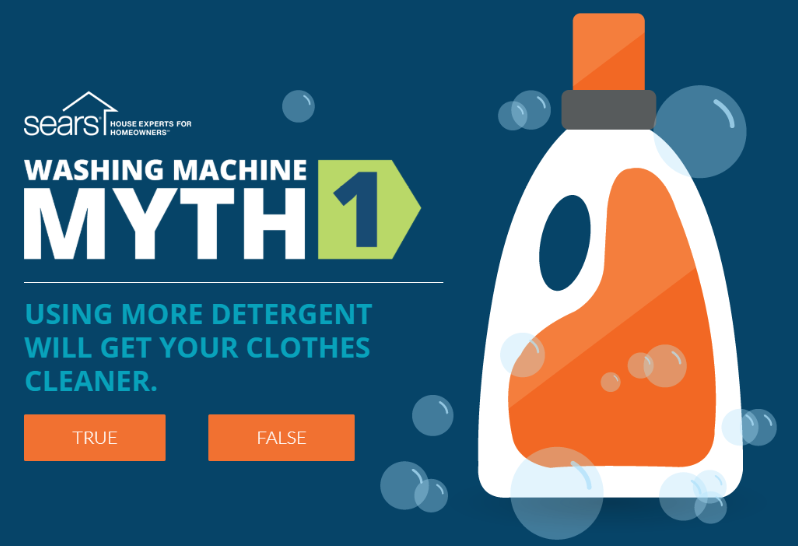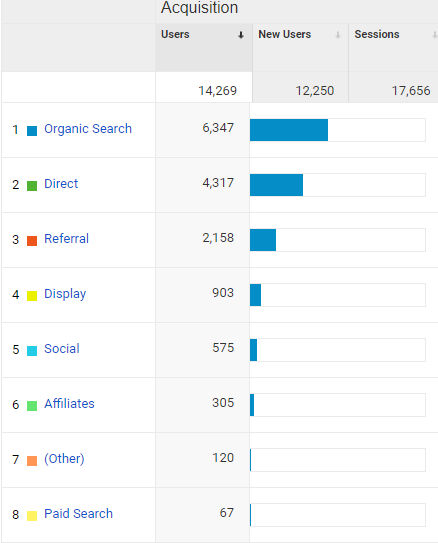Content Marketing for e-commerce is a useful strategy to generate more sales. The main reason for this is the approach: it’s deeper. With so much online advertising, automated features may not attract as often.
These people seek something more detailed when it comes to products and services. More precisely, 70% of consumers prefer to know more about companies through articles rather than ads.
If your audience is willing to consume content, you need to make them able to generate sales. The more valuable and interesting they are, the more decisive in generating the desire to buy.
It is essential to build a complete strategy to create content able to engage the consumer.
Plan, develop, distribute, and measure: this is the way to sell more in e-commerce using Content Marketing.
This post will show 15 tips that will help you leverage your online sales with the help of content.
Read on and learn!
1. Create a strong brand persona
Knowing the average consumer of your brand is essential. For that, you need to find out some details about your audience, like:
- expectations about products and services;
- social values;
- social and economic status;
- types of content they prefer to consume;
- advantages they expect;
- preferences for purchase channels and customer relationship approach.
Brands that build strong buyer personas can understand the consumer and target them with better content.
Use surveys, measure their online behavior, and, from that, build an accurate persona. This way, your offered content will engage more, generating sales.
2. Structure a complete content strategy
It is necessary to follow a four-step journey to structure a Content Marketing strategy for e-commerce:
- strategy planning;
- content creation;
- content distribution;
- results measurement.
A strategy’s success can only be achieved if this timeline is built and restarted at the end of each cycle.
This continuous work guarantees that good content will be planned for your audience, considering relevant topics and issues.
Distribution in the most appropriate channels ensures you reach the audience, and measure attests to the success or the need for strategy adjustments.
3. Plan an editorial calendar about your industry
An editorial calendar is essential for a successful Content Marketing strategy for e-commerce.
This step consists of defining all kinds of content that will be offered.
A calendar helps structure all the subjects covered, the types of content produced on each one, and when they will be delivered.
Creating an editorial calendar is essential to ensure frequent content delivery that reaches the audience at all stages of the Digital Marketing funnel.
4. Write ebooks about methods of using products or services
Buying a new product or contracting a service may generate doubts. In these moments, the consumer seeks didactic and simple solutions.
Authorial explanatory content is the best way to satisfy this search. For that, producing ebooks that serve as guides can be essential.
Consumers know how to value the importance of this and will be more likely to buy after learning about something. So, there’s nothing quite like the company itself to talk about its products.
To sell, you first have to educate.
This process is one of the foundations of Content Marketing for e-commerce, and ebooks can help a lot to generate conversions.
5. Produce tutorial and review videos
Online reviews of products have been a strong trend on the web in recent years: 93% of consumers have their purchase decisions impacted by this format of content.
Therefore, if the idea is to leverage your e-commerce sales through Content Marketing, it is essential to create online reviews.
Besides, videos are a way to boost the power of reviews, as, by 2022, they will be 82% of the content traffic consumed on the web.
So, unite these two formats: create video reviews about your products, how to use them, and address any topic that may generate doubts.
6. Focus on high-quality contents
If we’re talking about Content Marketing for e-commerce, we also need to talk about SEO. Optimizations are essential to ensure greater visibility and to attract audiences to content.
Marketers who study SEO know how much the quality of content is the main factor of ranking on Google. Therefore, this should be a priority in any strategy.
Make sure your content delivers value, is educational, easy to understand, and, most importantly, well written.
Blog posts, ebooks, and videos produced with quality attract, engage, and convert more.
7. Use frequently searched keywords
Keywords are a way to track your audience’s behavior online. These words help you understand what kind of content is searched for on Google.
When your Marketing team knows these keywords, they know what subjects they can create content about. It’s the best way to meet your audience’s expectations.
Content that meets keywords will be in higher demand and will be able to generate value. This work is the beginning of a possible conversion that can result in sales.
8. Keep your content updated
It is common to have good content already published, which meets keywords but is old and outdated.
Reusing them is common and helps companies to have new possible points of contact with the consumer.
In them, it is possible to make adjustments and updates like:
- using new keywords;
- bringing new insights into the subject;
- improving the quality of content;
- inserting videos and images;
- increasing the size and detail level of the content.
9. Create seasonal content
Seasonal content is an essential strategy to generate more sales in e-commerce. Good examples are seasons like holidays and Black Friday, among others.
In these periods, consumers are more likely to buy. Therefore, content designed to meet these expectations can further stimulate consumption.
Contents must talk about the market and products, which, in some way, educate and prepare the consumer to buy.
10. Create social proof using storytelling
 Source:Fitbit
Source:Fitbit
Subtitle: Fitbit has a page on its website with testimonials from other people that have used the gadget.
Social proof content helps customers see that other consumers like them have succeeded with a specific product or service.
It is possible to use Content Marketing for e-commerce to promote this type of perception, generating the desire to purchase. For this, another strategy needs to be combined: storytelling.
Your target audience can engage more quickly if you tell a successful brand’s success story, which has helped a customer and generated satisfaction.
11. Share content where your audience is
Knowing your persona will let you see what channels it’s on. From this information, the delivery of your content can be more accurate.
That delivery is an essential part of the strategy. As much as content can be found in search engines, other channels increase traffic to them.
Find out where your audience is present and distribute content on those same channels. Afterward, measure the traffic to posts, ebooks, and videos to find out where they originated.
12. Use interactive content
Interactive content generates many more possibilities for engagement.
It’s a simple recipe: offer valuable content capable of engaging, arousing interest, and the desire to interact in exchange for more information.
Some of the main types of interactive content are:
- interactive ebooks;
- interactive infographics;
- interactive videos;
- interactive white paper;
- interactive quizzes.
 Source: Sears
Source: Sears
Subtitle: Sears created an interactive content quiz to show the myths of washing machines.
13. Use video and photos on your content
When working in Content Marketing for e-commerce, it is necessary to consider the following data disclosed by a Jeff Bulas survey:
- 67% of consumers say that quality images are essential when selecting and buying a product;
- articles with images generate 94% more views.
Images are more able to attract public attention and generate interest. So be sure to illustrate the content of your strategy.
Always use copyrighted images or image stocks. This way, your brand avoids legal problems and delivers high-quality visual content.
14. Partner with influencers to create content
Influencer Marketing is a strategy that can generate great results. In a survey, The Digital Marketing Institute, found eye-catching data, like:
- 49% of consumers buy from the recommendation of an influencer;
- US$ 6.50 is the return of Influencer Marketing campaigns for each dollar invested;
- 67% of marketers promote content with the help of influencers.
If your content strategy doesn’t yet count on these people, it’s time to pick them up. Creating blog posts, ebooks, and reviews with influencers generates a higher chance for engagement and conversion.
Choose an influencer that communicates well with your audience first. After that, create detailed and valuable content, always promoted, and with the participation of these influencers.
They will definitely help to sell more.
 Source: Jannid
Source: Jannid
15. Measure your results
Measuring, finally, is the end of this cycle and the restart point. If results are good, it’s a sign that the strategy was successful and well thought out.
On the other hand, bad results need to be analyzed to understand what can be changed. Measuring is always essential, so it is a fundamental part of the journey.
Monitor the results of the contents created, checking metrics like:
- number of visits;
- conversions generated from each content;
- which distribution channels generate the most traffic;
- what is the origin of the accesses (direct access, social media, Google search);
- shares.
 You can check the source of the traffic with Google Analytics
You can check the source of the traffic with Google Analytics
Look at the metrics that really help understand the public’s behavior and their engagement with the content. These numbers should help optimize the strategy
The use of Content Marketing for e-commerce is a strategy that cannot be ignored. Companies have achieved more conversions and, as a final goal, many more sales. With proper planning, it is possible to increase their revenues.
Are you looking to understand how much your investments in Content Marketing generate in revenue? Learn how to calculate the ROI of these strategies!
This post is written by Rock Content.
PRmention is a digital PR agency for startups & SaaS businesses. Occasionally, we accept high quality contributed content and we’d love to hear any ideas you may have. Feel free to email us on guestcolumn@prmention.com if you are interested in contributing.

